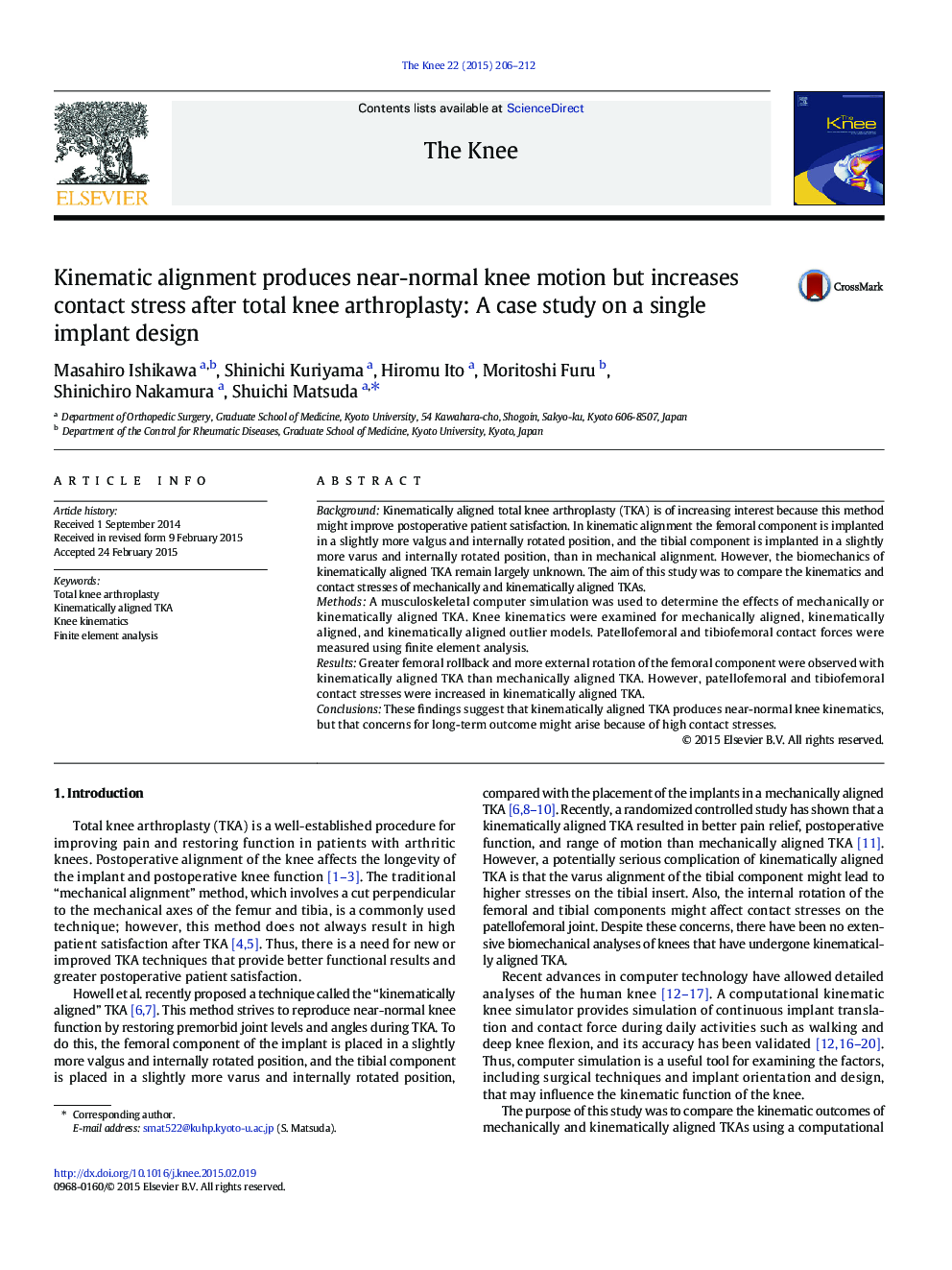| Article ID | Journal | Published Year | Pages | File Type |
|---|---|---|---|---|
| 4077322 | The Knee | 2015 | 7 Pages |
•We analyzed the kinematic outcomes of mechanically and kinematically aligned TKAs using a computational knee simulator.•Kinematically aligned TKA exhibited larger femoral rollback and more external rotation of the femoral component than mechanically aligned TKA.•Patellofemoral and tibiofemoral contact stresses were more increased in kinematically aligned TKA compared with mechanically aligned TKA.
BackgroundKinematically aligned total knee arthroplasty (TKA) is of increasing interest because this method might improve postoperative patient satisfaction. In kinematic alignment the femoral component is implanted in a slightly more valgus and internally rotated position, and the tibial component is implanted in a slightly more varus and internally rotated position, than in mechanical alignment. However, the biomechanics of kinematically aligned TKA remain largely unknown. The aim of this study was to compare the kinematics and contact stresses of mechanically and kinematically aligned TKAs.MethodsA musculoskeletal computer simulation was used to determine the effects of mechanically or kinematically aligned TKA. Knee kinematics were examined for mechanically aligned, kinematically aligned, and kinematically aligned outlier models. Patellofemoral and tibiofemoral contact forces were measured using finite element analysis.ResultsGreater femoral rollback and more external rotation of the femoral component were observed with kinematically aligned TKA than mechanically aligned TKA. However, patellofemoral and tibiofemoral contact stresses were increased in kinematically aligned TKA.ConclusionsThese findings suggest that kinematically aligned TKA produces near-normal knee kinematics, but that concerns for long-term outcome might arise because of high contact stresses.
